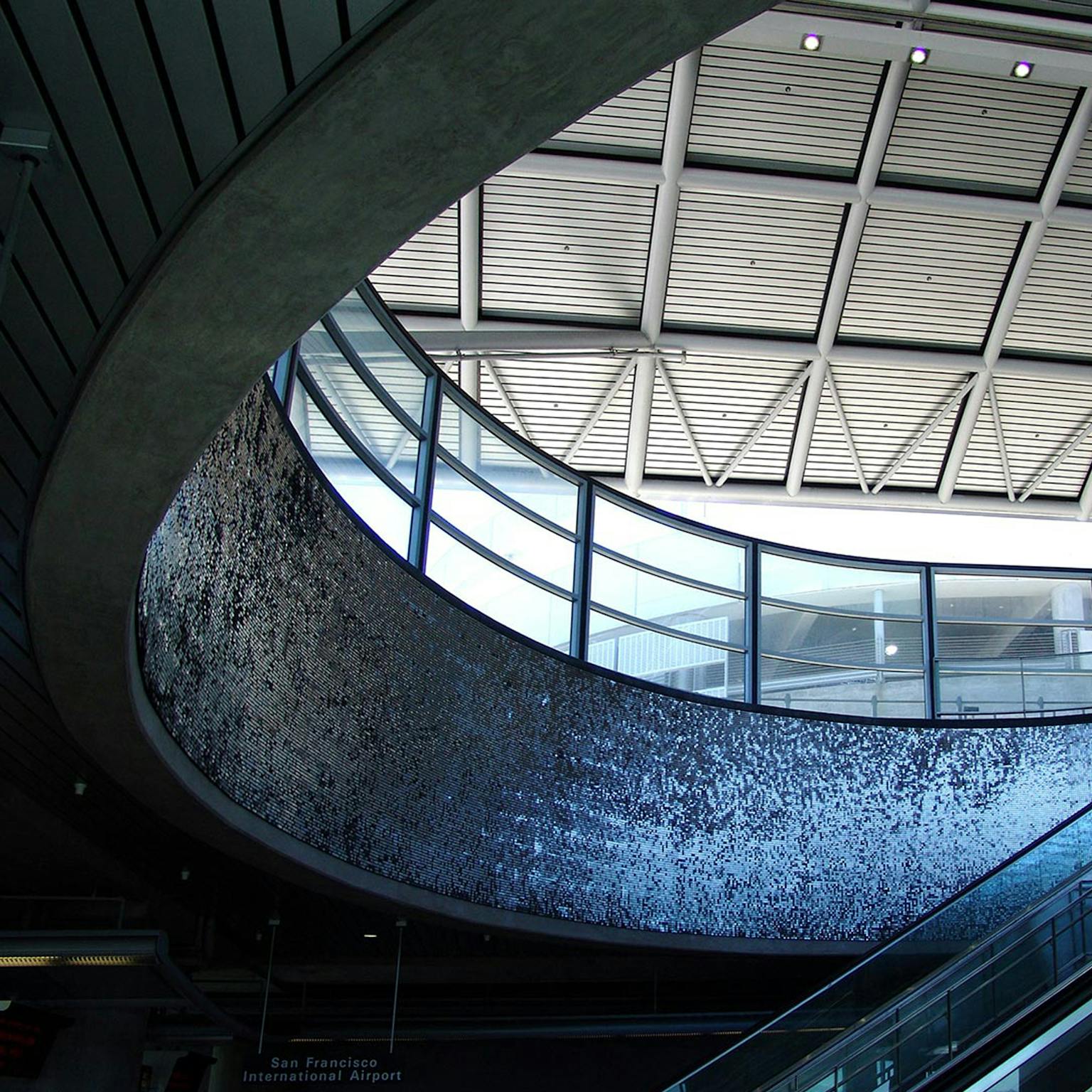In Residence: How the Kinetic Works of Ned Kahn Bring Greater Awareness our Presence + Surroundings

MAWD sits down with environmental artist, MacArthur Genius Grantee, and National Design Award Recipient for a conversation on how large-scale kinetic artworks can inspire individual awareness, promote wellness, and anchor community.
Welcome, Ned. Can you tell us about how you got started, and the early influences behind your work?
In the early 1980s, I was working at the Exploratorium: The Museum of Science, Technology and Arts in San Francisco, specifically focusing on the construction of science related exhibitions, presenting large-scale kinetic sculptures. This confluence of art and science stayed with me throughout my career, with my earlier works investigating how nature organizes itself into patterns.
I soon began collaborating with architectural firms, and began to ask: how can I make the skin of a building sensitive and granular? So much of architecture is trying to convey solidity. What if I did the opposite?
Your work is very much about the environment and ecology. How does your work aim to uncover the relationship between organic landscapes and our own built landscapes?
I believe a lot of this has to do with making energy flows visible. If the role of architecture has traditionally been to conceal, my work aims to bring visibility to the flows of energy that have traditionally been kept out of sight.
Most architectural projects pose significant ecological impact. Therefore, showcasing the heat gains buildings produce — such as in the form of electricity generating art — helps to reveal our built environment’s own continually occurring processes.

How do you think your work increases mindfulness? Does it bring a greater sense of awareness and presence to the viewer?
A great deal of my own investigations have asked: how can we make spaces that appeal to basic human instincts? One example is breathing. We breathe, and buildings do too. Again, traditional architecture has aimed to conceal this airflow, but once you can see it - it’s magical.
Your work is closely tied to the environment, and draws great inspiration from nature. Do you believe your work brings greater appreciation to the natural world? If so, how?
Nature has always held my attention. I have never gotten bored looking at cloud passing, ocean tides rippling, or the wind blowing. Because my work speaks to these natural phenomena, and are shaped by them, I hope these structures will not only hold people’s attention, but shift their emotional connection to the atmosphere.
Unlike traditional works of art, your sculptures find themselves outdoors: attached to buildings, in gardens, or large public squares. How does this non-traditional display of your works both affect the viewer’s experience, and the physical artworks themselves?
As opposed to the traditional art museum, a majority of my works are immersed in landscapes where interaction is encouraged. Depending on the scale of the work, I encourage people to touch my work, manipulate it. For larger, architectural works, I hope there is a chance that these works will transform how you relate to architecture, and transform how viewers see themselves in relation to the large, imposing structures. In this sense, I hope the outdoor, large-scale nature of my work helps blur the distinction between art and architecture, viewership and participation.
Each of my projects are different. My works are highly experimental, and I spend countless hours prototyping. My process is more akin to an experiment. Because every project is different, and produces vastly different responses.
Working outdoors means that I am handing over part of the creative process to nature.
I work with durable materials that age well over the span of decades. However, I also embrace rust and patina. Natural systems and human systems exist in tandem. My work shows this hybrid nature of both built and organic forces. I hope that this synergy, and the beauty that it creates, demonstrates the restorative collaboration both humans and nature share.


